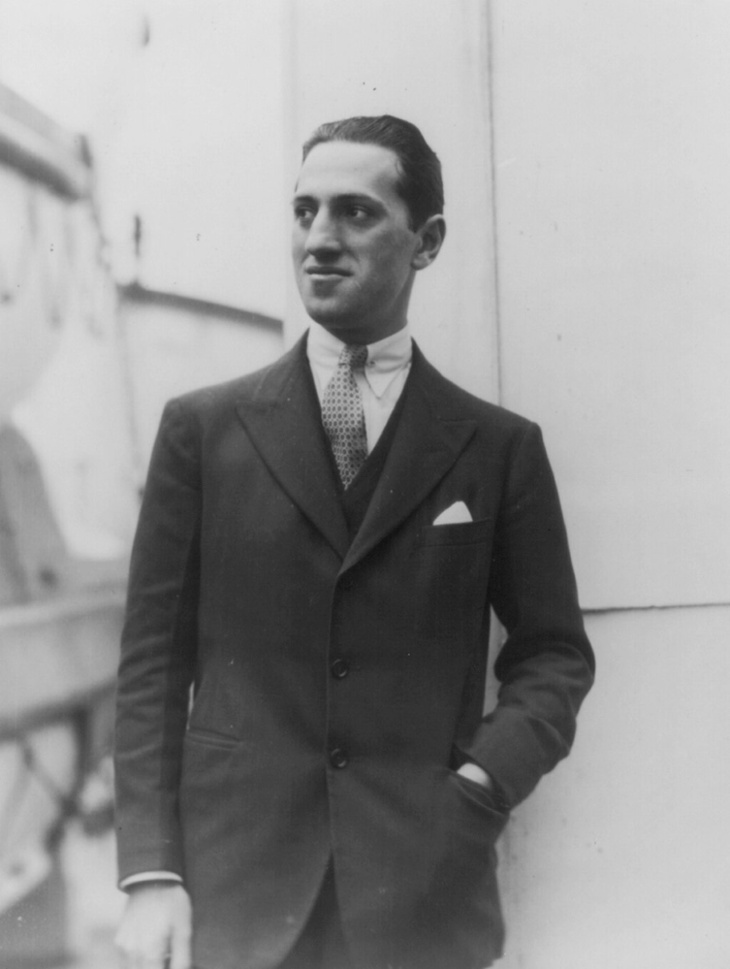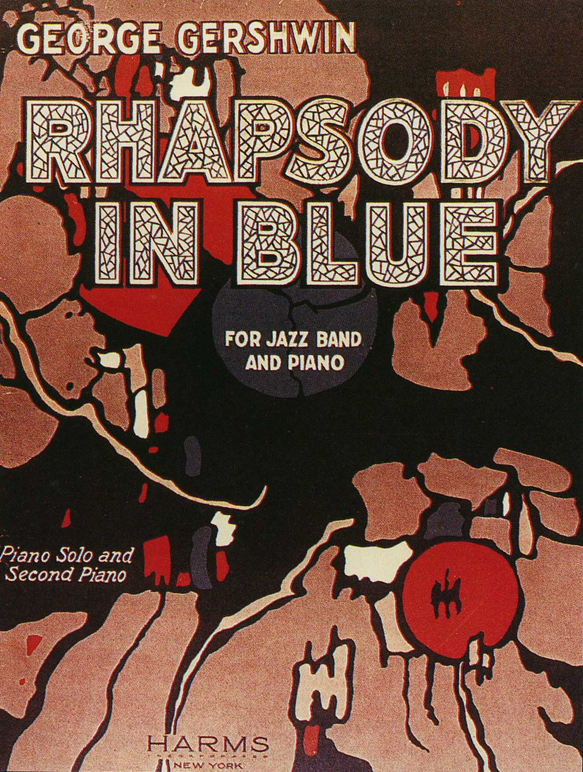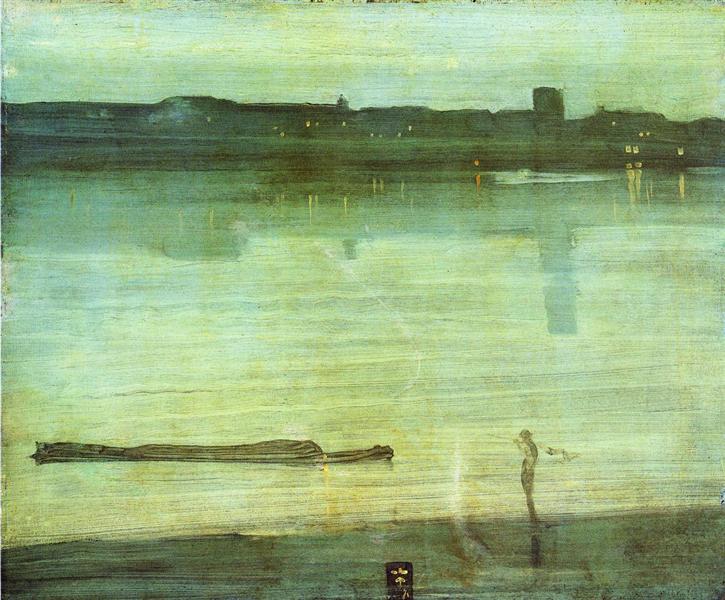
George Gershwin
February 8, 2024 | Paul Richardson

George Gershwin
Imagine you are out playing a round of pool with some buddies, and you find out (by reading the newspaper), that you are expected to compose a new, groundbreaking, classical-jazz genre-blending concerto for debut in five weeks.
Oh, and as if that pressure isn’t enough, the premiere will be attended by Sergei Rachmaninov, John Philip Souza, Leopold Stokowski, and Igor Stravinsky.
This is the backstory behind Rhapsody in Blue, which was first performed exactly 100 years ago, on February 12, 1924, with the subtitle “An Experiment in Modern Music.”

Just over a month before the performance, George Gershwin, already a hugely famous composer and performer, found out he “was at work on a jazz concerto” from a newspaper story. It was a trick by the famous jazz band leader Paul Whiteman (“The King of Jazz”), to force Gershwin’s hand. Whiteman had earlier asked Gershwin to compose such a piece, but Gershwin had declined, saying there was not enough time, plus he was working on finishing up Sweet Little Devil.
The next morning, Gershwin called Whiteman on the phone and Whiteman said he was forced to announce the February 12 concert because his arch-rival, Vincent Lopez, planned to steal his idea of an experimental concert. Thankfully, Gershwin fell for it, and Whiteman told him that “all” he had to do was write the piano score. Whiteman would have it orchestrated.
Over 18 days, from January 7 to 24, Gershwin composed (some of it inspired by time on the train between New York and Boston) the incomparable tune that went on to become one of the most popular and recognizable pieces in the classical repertoire. He originally titled the work American Rhapsody, but his brother Ira had recently seen James Whistler’s Nocturne In Blue And Green at an exhibition and said it should be named Rhapsody in Blue instead.
As composer and critic David Bruce suggests, one reason the tune may have become so embedded in our culture is that it is “quintessentially New York City – it was the first true melting pot piece for a melting pot city.”
And as New York goes, so goes the nation...
Bruce’s fine video (linked above) has loads of information about the history and mechanics of the piece. And also includes the tidbit that the famous opening glissando for clarinet was an afterthought – it was added when the original clarinetist, Ross Gorman, joked around during the stretching notes out and added a jazzy, humorous style. Gershwin loved it and told him to play it that way at the premiere, with “as much of a wail as possible.”
Rhapsody has found its way into everything from the opening to Woody Allen’s film Manhattan, to the opening ceremony of the 1984 Olympic games (where 84 pianists played it in sync), to the theme song for United Airlines.

Interestingly, the version most often heard performed today is the one orchestrated by Ferde Grofé in 1942, five years after Gershwin’s death. Gershwin only wrote a two-piano score, and Grofé orchestrated the original 1924 version for piano and jazz orchestra. It is this original 1924 version that will be performed at Festival Boca on March 10, with the mesmerizing Dominic Cheli on piano.
Dominic Cheli’s playing has been described as “spontaneous yet perfect, the best of how a young person can play.” (Symphony Magazine). His rapidly advancing career included his Walt Disney Concert Hall Debut with the Colburn Orchestra where Dominic was “mesmerizing, (he) transfixed the audience…his fingers were one with each key.” (LA Times).
“Beginning with that incomparable, flamboyant clarinet solo, Rhapsody is irresistible still, with its syncopated rhythmic vibrancy, its abandoned, impudent flair that tells more about the Roaring Twenties than could a thousand words, and its genuine melodic beauty colored a deep, jazzy blue by the flatted sevenths and thirds that had their origins in the African-American slave songs.”
– Music critic Orrin Howard
A fun version of the Tokyo Melodica Orchestra performing it on melodicas.
An absolutely enchanting version by the Kupinski Guitar Duo.
A gorgeous performance by Brandon Ridenour on Piccolo Trumpet
And finally, listen to Gershwin himself playing both parts in the 2-piano version of the score.
Buy books by Festival authors, past and present, at our Festival Bookshop on bookshop.org and not only do you support independent booksellers, but help Festival Boca, which gets a modest commission on all referred sales.